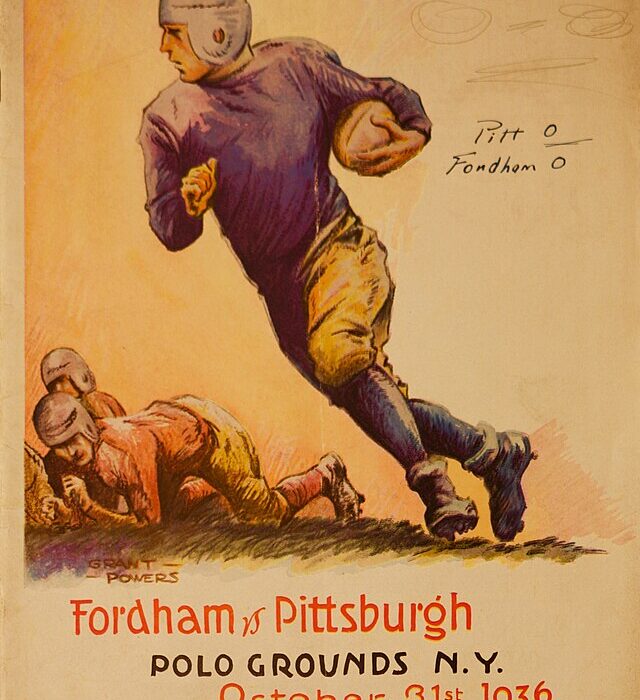
🧱 The Birth of the “Seven Blocks of Granite”: Fordham vs. Pitt (October 31, 1936)
Posted in :
On Halloween, October 31, 1936, at the Polo Grounds in New York, the #5 Fordham Rams took on the highly-ranked #2 Pittsburgh Panthers in a game that became a defensive struggle for the ages. The final score: a 0-0 tie. While a scoreless draw may seem uneventful, this brutal contest was a formative moment in college football history, largely due to the emergence of one legendary unit.
The story of the game was Fordham’s dominant defensive line, which held the powerful Pitt team, coached by Jock Sutherland, to a mere 73 yards of total offense and intercepted the Panthers four times. The Rams had their chances to score, moving the ball well and attempting two field goals, but ultimately, no points were put on the board. This defensive stand was the second of three consecutive scoreless ties the Rams played against Pitt between 1935 and 1937, denying the Panthers a clear path to a national title.
Significance and Key Players
The true legacy of this game lies in the moniker the New York press gave to the Rams’ legendary offensive line, which provided the defensive muscle: The Seven Blocks of Granite. This group featured several future football legends:
- Vince Lombardi: Playing as the right guard, Lombardi would go on to become one of the greatest coaches in NFL history, leading the Green Bay Packers dynasty.
- Alex Wojciechowicz: The center of the line was a future College and Pro Football Hall of Famer.
Furthermore, the line was coached by Frank Leahy, who would later become a Hall of Fame coach, leading Notre Dame to four national championships. On the Pitt side, the team was led by sophomore running back sensation Marshall Goldberg, a future All-American and Pro Bowl player.
The 1936 tie proved that the Fordham defense was a national force, and the Seven Blocks of Granite became synonymous with toughness, discipline, and the foundation of gridiron success, forever linking this Halloween game to football’s elite coaching and playing legacies.

